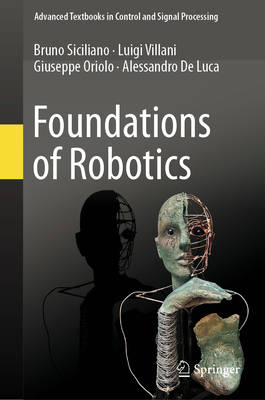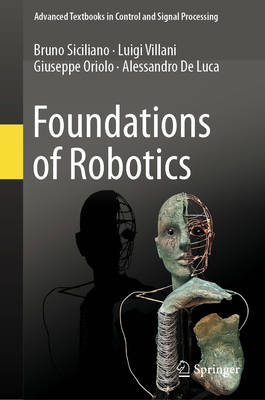
- Afhalen na 1 uur in een winkel met voorraad
- Gratis thuislevering in België vanaf € 30
- Ruim aanbod met 7 miljoen producten
- Afhalen na 1 uur in een winkel met voorraad
- Gratis thuislevering in België vanaf € 30
- Ruim aanbod met 7 miljoen producten
Zoeken
€ 198,45
+ 396 punten
Omschrijving
This textbook explores the foundational principles of robotics, focusing on its core pillars: modeling, planning, and control. Balancing mathematical rigor and physical intuition, a coherent formalism is established and used throughout the book. At the same time, technological challenges and application-driven solutions are given appropriate consideration. With a general perspective that includes both fixed-base manipulators and mobile robots, the book presents the essential tools for understanding key topics such as kinematics, statics, trajectory planning, dynamics, and motion control. In its second part, more advanced topics are addressed, including wheeled robots, visual control, motion planning, force control, flexible robots and cooperative manipulation. To support the learning process, appendices provide essential background material on linear algebra, mechanics, differential geometry, control theory, and graph search algorithms. The practical implementation of the methodologies is emphasized throughout, with over 50 worked examples and case studies, many supported by simulations. Additionally, more than 190 end-of-chapter problems are included, with a Solutions Manual available for instructors adopting the book for their courses. Foundations of Robotics is designed for use as a textbook in both undergraduate and graduate robotics courses within engineering programs, making it an ideal resource for students and educators alike.
Specificaties
Betrokkenen
- Auteur(s):
- Uitgeverij:
Inhoud
- Aantal bladzijden:
- 719
- Taal:
- Engels
- Reeks:
Eigenschappen
- Productcode (EAN):
- 9783031855221
- Verschijningsdatum:
- 7/09/2025
- Uitvoering:
- Hardcover
- Formaat:
- Genaaid
- Afmetingen:
- 156 mm x 234 mm
- Gewicht:
- 1215 g

Alleen bij Standaard Boekhandel
+ 396 punten op je klantenkaart van Standaard Boekhandel
Beoordelingen
We publiceren alleen reviews die voldoen aan de voorwaarden voor reviews. Bekijk onze voorwaarden voor reviews.











